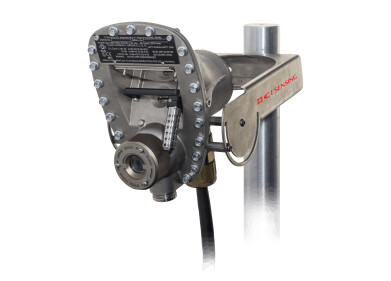Air Monitoring
Assessing Air Monitoring Networks in the UK
May 02 2022
The following presentation was delivered at AQE 2021. If you or your business are involved in air monitoring, follow the link for updates on next year’s Air Quality and Emissions show, an international exhibition of analytical instrumentation for the monitoring of air quality.
In the UK, the non-departmental Environment Agency manages the nation’s various monitoring networks, including those analysing ambient air for various pollutants, on behalf of the Department for Environment, Food and Rural Affairs (DEFRA). Every now and then, the Agency delivers a strategic review of these networks to DEFRA in an attempt to keep the system future-proof and up-to-date. And when it comes to the general trajectory of air monitoring in the UK, then, these reviews tend to be important impetuses for innovation and tend to influence the market-behaviour of firms.
According to Professor Rob Kinnersley, the Principal Scientist within the Evidence Directorate of the Environment Agency, it’s high time for another review. Despite a general squeeze on resources at both national and regional levels, the delivery of air quality continues to accrue political capital and as the United Kingdom begins to carve out its own legal infrastructure for environmental management in the wake of its departure from the European Union, we’ve clearly reached a sort of cross-roads for air quality.
In such a context, a strategic review of the UK’s air monitoring network could blaze our new path. So, what sort of questions are asked of the UK’s air monitoring networks during these reviews? What sort of criteria must they meet?
The stated aim of Phase One of the Environment Agency’s strategic review runs as follows:
To ensure that the UK’s publicly-funded air quality monitoring activities are meeting current and projected needs, and doing so as effectively and resource-efficiently as current methods allow.
This concision, of course, squeezes out a fair amount of nuance. For instance, what are our ‘current and project needs’? Should we be looking to avoid costly new infrastructure builds in favour of locating synergies – of measurement, for instance – that could ensure extra efficiency? In general, what sort of new instrumentation have become available since the last review that could future-proof the networks? What kind of problems can recent developments in data science help to solve?
For an in-depth exploration of these questions, take a look at Professor Rob Kinnersley’s lecture on Phase One of the upcoming strategic review from AQE 2021.
Digital Edition
AET 28.2 April/May 2024
May 2024
Business News - Teledyne Marine expands with the acquisition of Valeport - Signal partners with gas analysis experts in Korea Air Monitoring - Continuous Fine Particulate Emission Monitor...
View all digital editions
Events
Jul 10 2024 Birmingham, UK
Jul 21 2024 Cape Town, South Africa
Australasian Waste & Recycling Expo
Jul 24 2024 Sydney, Australia
Jul 30 2024 Jakarta, Indonesia
China Energy Summit & Exhibition
Jul 31 2024 Beijing, China


















